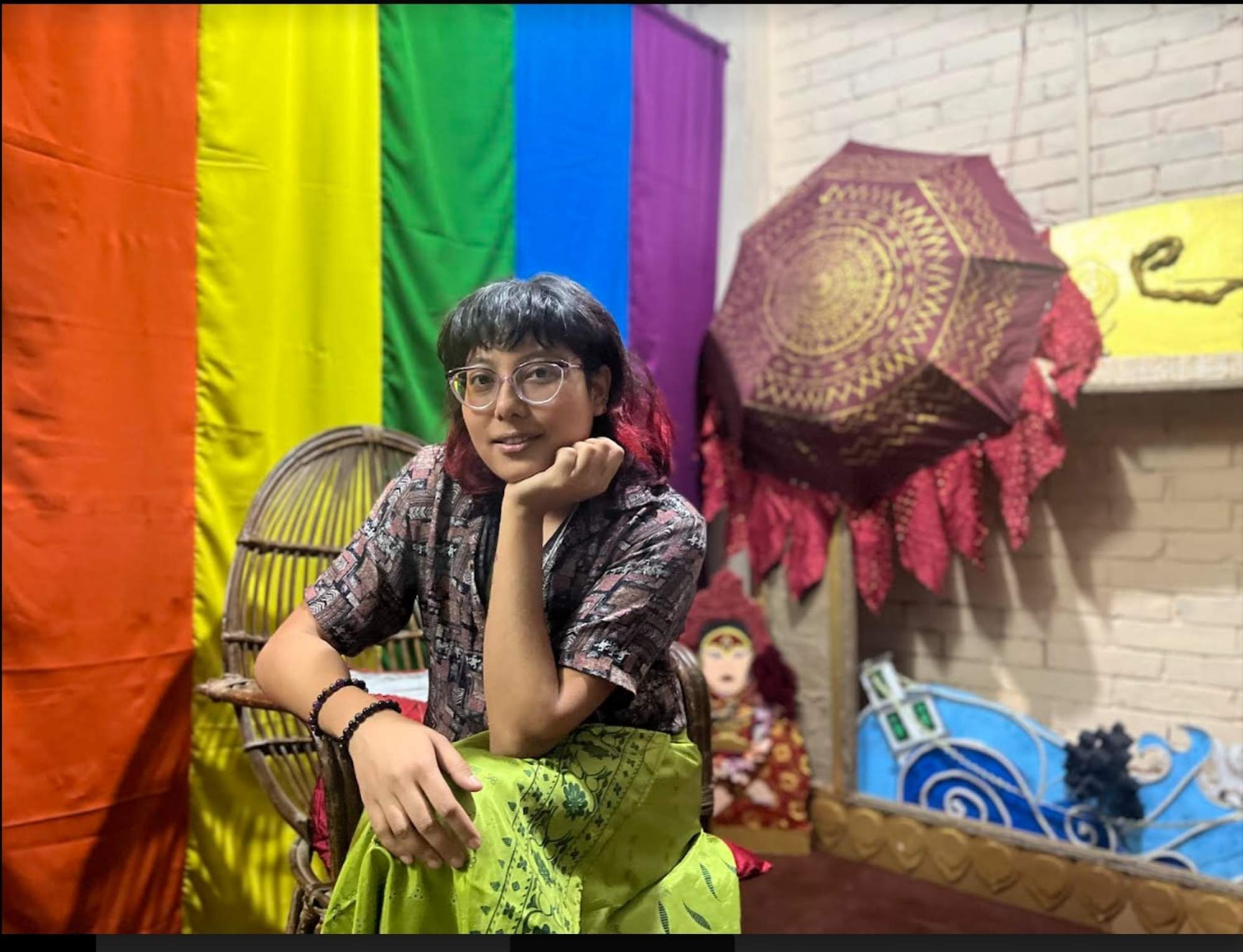Asexuality is the absence of sexual attraction with little interest in sexual activities, while aromanticism is a lack of romantic attraction or longing to form romantic relationships. However, both sexual orientations have a desire for platonic and emotionally intimate relationships.

But some rights advocates claim Nepal’s queer movement is not entirely inclusive, with the asexual community demanding to claim its space.
When not working as a doctor, Khadgi often gathers their team at the ground floor of their house in Kathmandu, which is also the headquarters for Nepali Aspecs. It is covered with pride flags, has literature on asexuality, and a blackboard scribbled with the group’s agenda – to be a welcoming place for people to share experiences and plan their advocacy works.
Khadgi is passionate when speaking and does not mince words, accusing many queer rights advocates of tokenising the asexual community only when discussing intersectionality and inclusivity. They says aphobia is prevalent mostly in the queer community because asexual and aromantic people “decentre romance and sex” that is seen as a key part of queer culture.
“Queerness is seen as something so rooted psychologically in people in terms of sexual and romantic attraction that asexuality and aromanticism fundamentally sound opposite of what queerness stands for,” Khadgi says.
“Queers know what it means to be ostracised and not being understood, how does that translate to you not trying to include others?”
“It’s not that we don’t feel acknowledged, we feel erased,” they say.
The messages Khadgi initially received on Instagram showed a lack of understanding about asexuality in absence of wider visibility. They said people not knowing about the label made them “pathologise themselves, feeling alienated and dehumanised.”
“I spent so much of my life not knowing and not understanding,” Khadgi says, tearing up. “I can’t fathom that every moment that I am not doing anything, thousands of other people are suffering not knowing about themselves.”
The community has helped several people questioning their sexual orientation or seeking acceptance. While one group member said becoming a part of Nepali Aspecs has been “validating and healing”, another said it has helped “to self-explore and discover how I viewed the world was not wrong”.
A 23-year-old, who wished to be called Brownie and identifies on the asexuality spectrum, said they instantly felt accepted in the Aspecs group as it was “more community-focused than activism oriented”.
“When you go to other queer groups, it feels you’re going to a certain camp and need to fit in – you feel like an outsider,” Brownie says. “I never felt that here.”

Madhurima Bhadra, a gender and public health educator, agreed there is a siloing of different identities in the queer spectrum in Nepal, which she says is detrimental to the overall movement. Many queer organisations are competing for funds from international donor agencies and visibility, which likely leads to a gap in whose voice is heard more prominently, she says.
“The LGBTQIA movement should not be about which organisation is doing what for whom, but rather about what they are collectively doing for the entire community.”
Khadgi and their team are trying to change such thoughts, both online and offline.
On Instagram, Nepali Aspecs aims to provide accurate information on asexuality and aromanticism, along with different identities within the spectra, which is largely missing in Nepal and elsewhere.

Khadgi says it is important to realise that love can exist without attraction, and many asexual and aromantic people are seeking platonic partnerships without forcing romance and sex into them.
“It is a legitimate and fulfilling way of existing for us,” they say.
The Nepali Aspecs community aims to amplify that message. Ahead of Pride month in June, the community is hosting pre-Pride hang-outs, a series of events and interaction programmes to assert their place in the queer movement and become visible to more people on the asexual and aromantic spectrum who might be in search of a community.
“To find out about oneself is the first step, and so many people don’t know that,” Khadgi says. “I created this group out of compulsion because I was desperate to find another Nepali asexual person. But every time a new person comes to us now, it feels magical.”
“Just four years ago, I thought asexual people did not even exist in Nepal and if I were the only one,” Khadgi said. “Now we have a community.”


